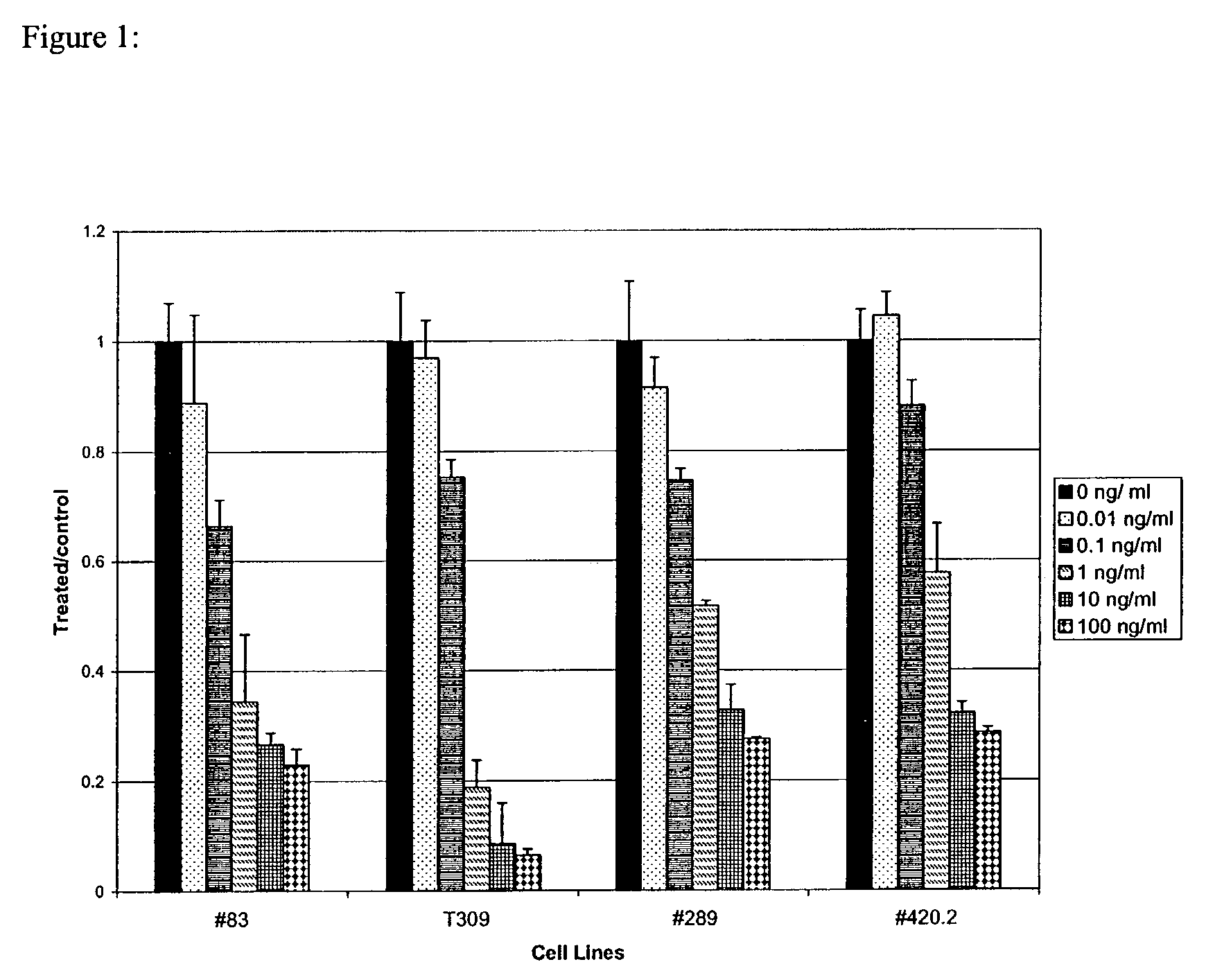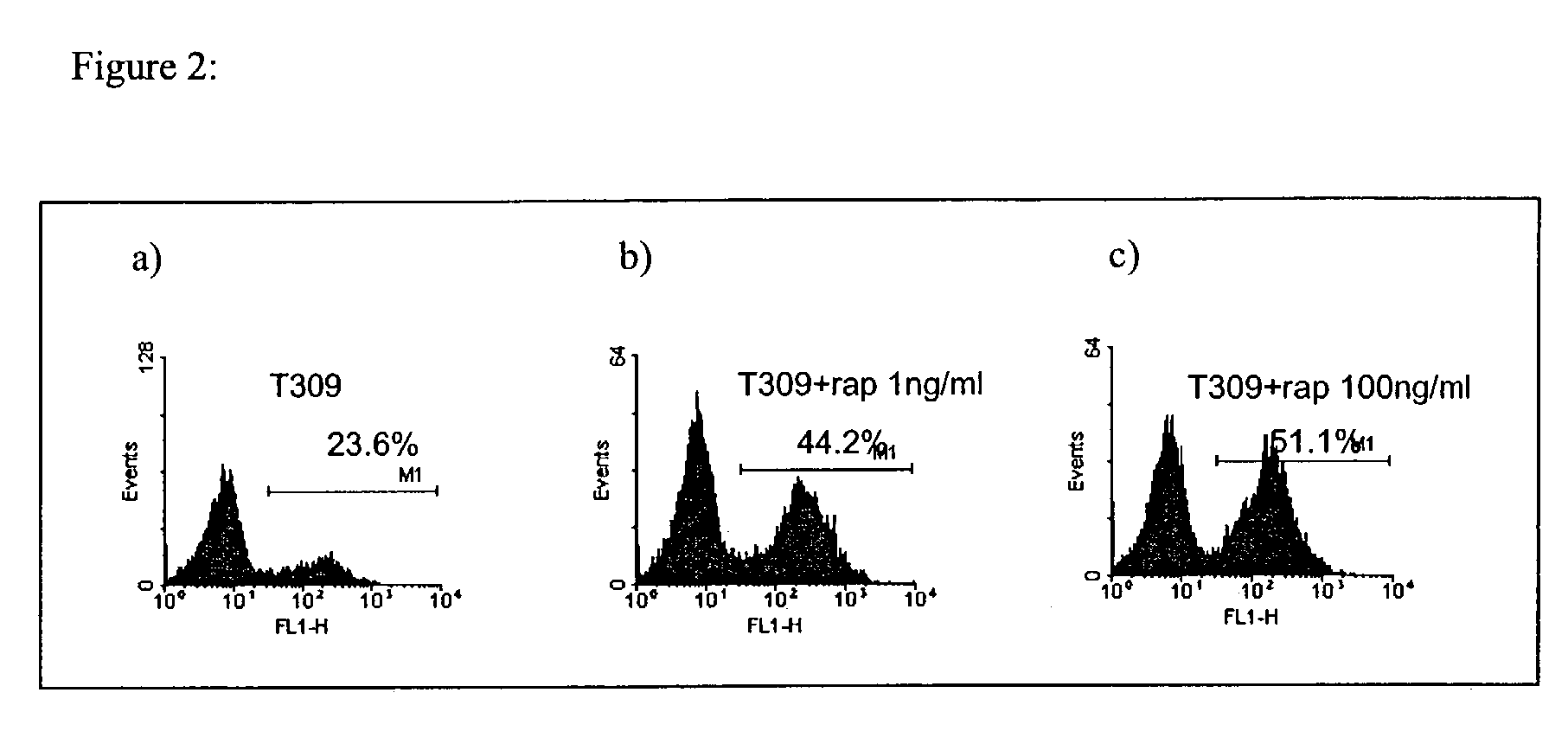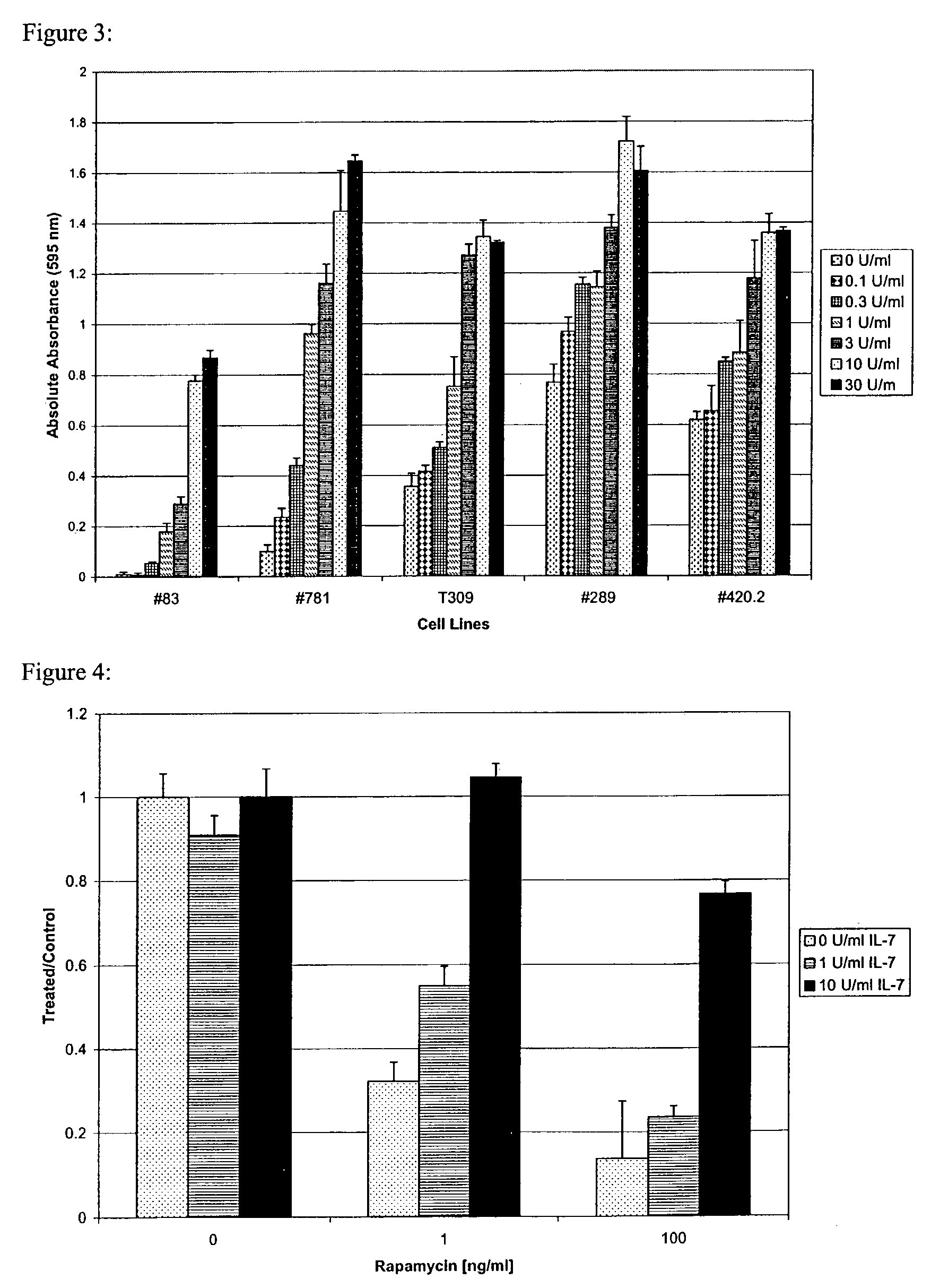Methods for treatment of acute lymphocytic leukemia
a lymphocytic leukemia and acute treatment technology, applied in the field of acute lymphocytic leukemia treatment methods, can solve the problems of lymphoid malignancies, the role of these cytokines in the development or progression of progenitor b cell lymphoid malignancies has not been fully elucidated, and achieve the effect of improving the prognosis for children
- Summary
- Abstract
- Description
- Claims
- Application Information
AI Technical Summary
Benefits of technology
Problems solved by technology
Method used
Image
Examples
example i
The mTOR Inhibitor Rapamycin is Active Against B-precursor Leukemia in vitro and in vivo, an Effect Which is Modulated by IL-7 Mediated Signaling
Material and Methods
[0049]Cell Preparation and Cell Culture Conditions. A single cell suspension of bone marrow or lymph nodes from leukemic Eμ-RET+ transgenic mice was prepared [Wasserman, 1998]. These ALL cells were maintained at 37° C. with 5% CO2 in RPMI-1640, L-Glutamine, 10 mM HEPES, 1 mM Sodium Pyruvate, 100 μM non-essential amino acids, 100 U / ml penicillin, 100 μg / ml streptomycin (GibCo-BRL, Rocksville, Md.), 50 μM 2-mercaptoethanol (FisherScientific, Fair Lawn, N.J.)+10% Fetal Calf Serum (HyClone, Logan, Utah)+10% Calf Serum (HyClone, Logan Utah) (C20 media) with 10 U / ml IL-7. Cell surface markers on these cells were determined by flow cytometry as described previously [Wasserman, 1998], and the phenotype was stable in culture over time.
[0050]Proliferation Assays. Cells were cultured in IL-7-free C20 media for 24 hours. For in vitr...
example ii
Evaluation of Changes in mRNA Expresion in ALL Cells Treated with Rapamycin with and without IL-7
[0067]In order to assess more broadly the mechanism of action of rapamycin and the effect of IL-7 on these cells, we used Affymetrix MG-U74Av4 Genechips to evaluate changes in mRNA expression. In ALL cells treated with rapamycin + / −IL-7, we found clustering of differential expression of genes involved in cell metabolism, growth and survival as well as genes involved in transcription and translation regulation. We found the most profound change in expression in the YES proto-oncogene, a member of the src family of kinases. It is virtually undetectable in cells treated with rapamycin, and is completely rescued with the addition of IL-7. To characterize the post-translational changes that occur within ALL cell lines when cultured with rapamycin and IL-7, we evaluated proteins known to play a role in mTOR and IL-7 signaling pathways. Phosphorylated p70S6 kinase is profoundly decreased in rap...
example iii
RAD001 is Active Against Leukemia in Experimental Models of ALL
[0068]In this study, we have found that a second mTOR inhibitor, RAD001 (everolimus) (Novartis), also causes growth suppression in ALL cells in vitro as well as showing activity in vivo against leukemia / lymphoma in the ALL mouse model. RAD001 inhibits growth >50–90% in ALL cell lines. Daily oral administration of RAD001 extends survival almost 4 fold in Eμ-RET+ mice with advanced leukemia (high white blood count, large nodal masses, and massive hepatosplenomegaly) as compared to untreated littermates. In addition to extending survival, RAD001 induces disappearance of nodal masses and normalization of peripheral WBC counts. These results are similar to those found with rapamycin. These data demonstrate that the mTOR inhibitors rapamycin and RAD001 are both active against B-precursor malignancies.
PUM
| Property | Measurement | Unit |
|---|---|---|
| Time | aaaaa | aaaaa |
| Time | aaaaa | aaaaa |
| Density | aaaaa | aaaaa |
Abstract
Description
Claims
Application Information
 Login to View More
Login to View More - R&D
- Intellectual Property
- Life Sciences
- Materials
- Tech Scout
- Unparalleled Data Quality
- Higher Quality Content
- 60% Fewer Hallucinations
Browse by: Latest US Patents, China's latest patents, Technical Efficacy Thesaurus, Application Domain, Technology Topic, Popular Technical Reports.
© 2025 PatSnap. All rights reserved.Legal|Privacy policy|Modern Slavery Act Transparency Statement|Sitemap|About US| Contact US: help@patsnap.com



